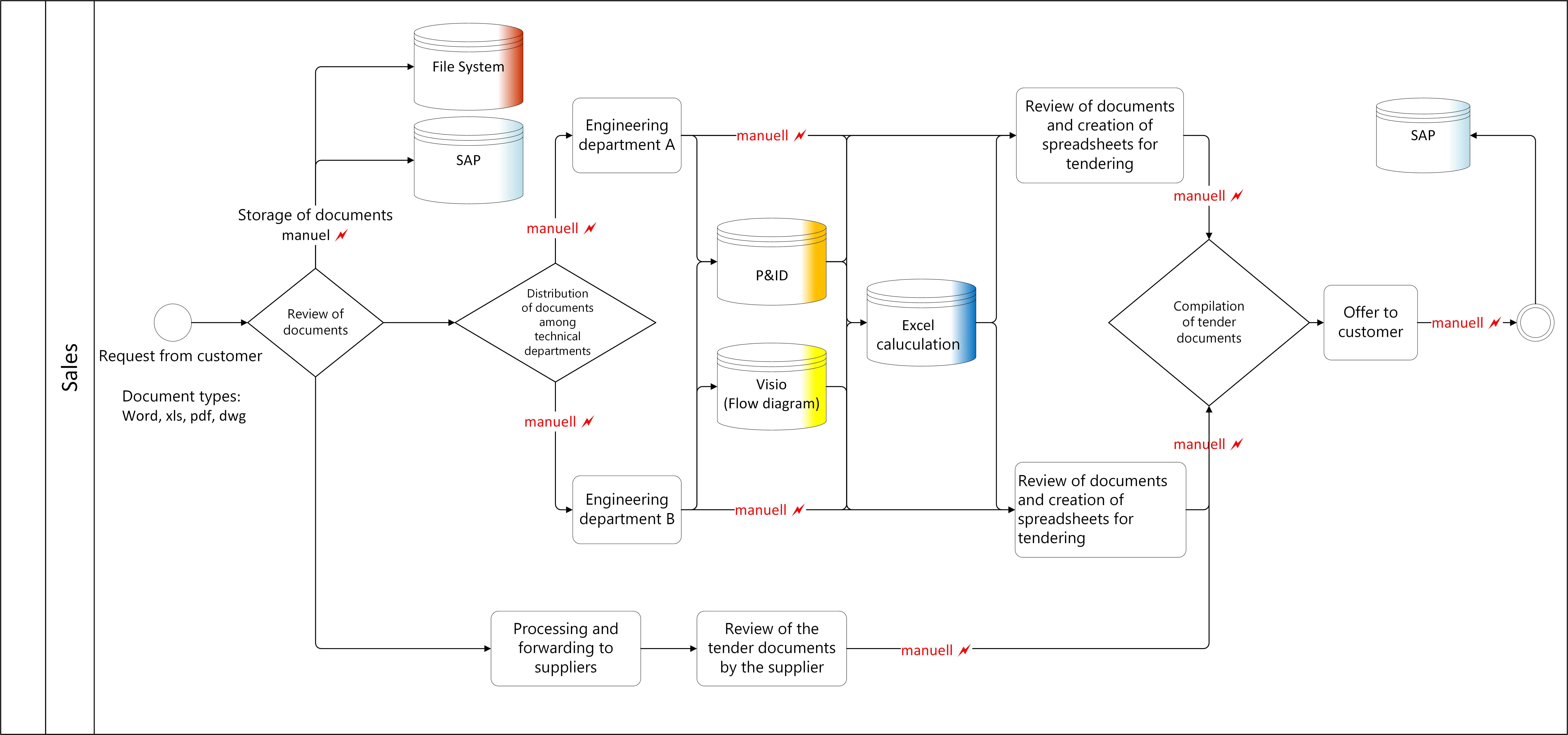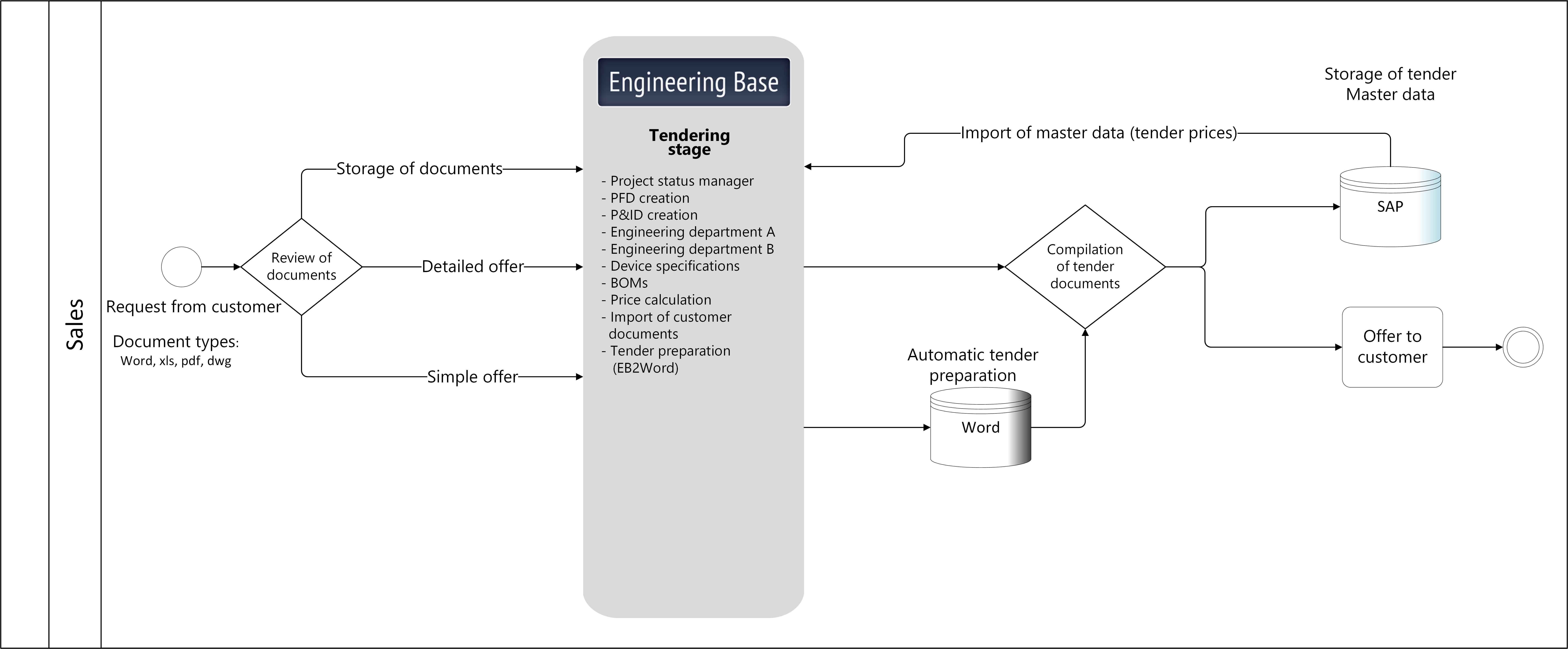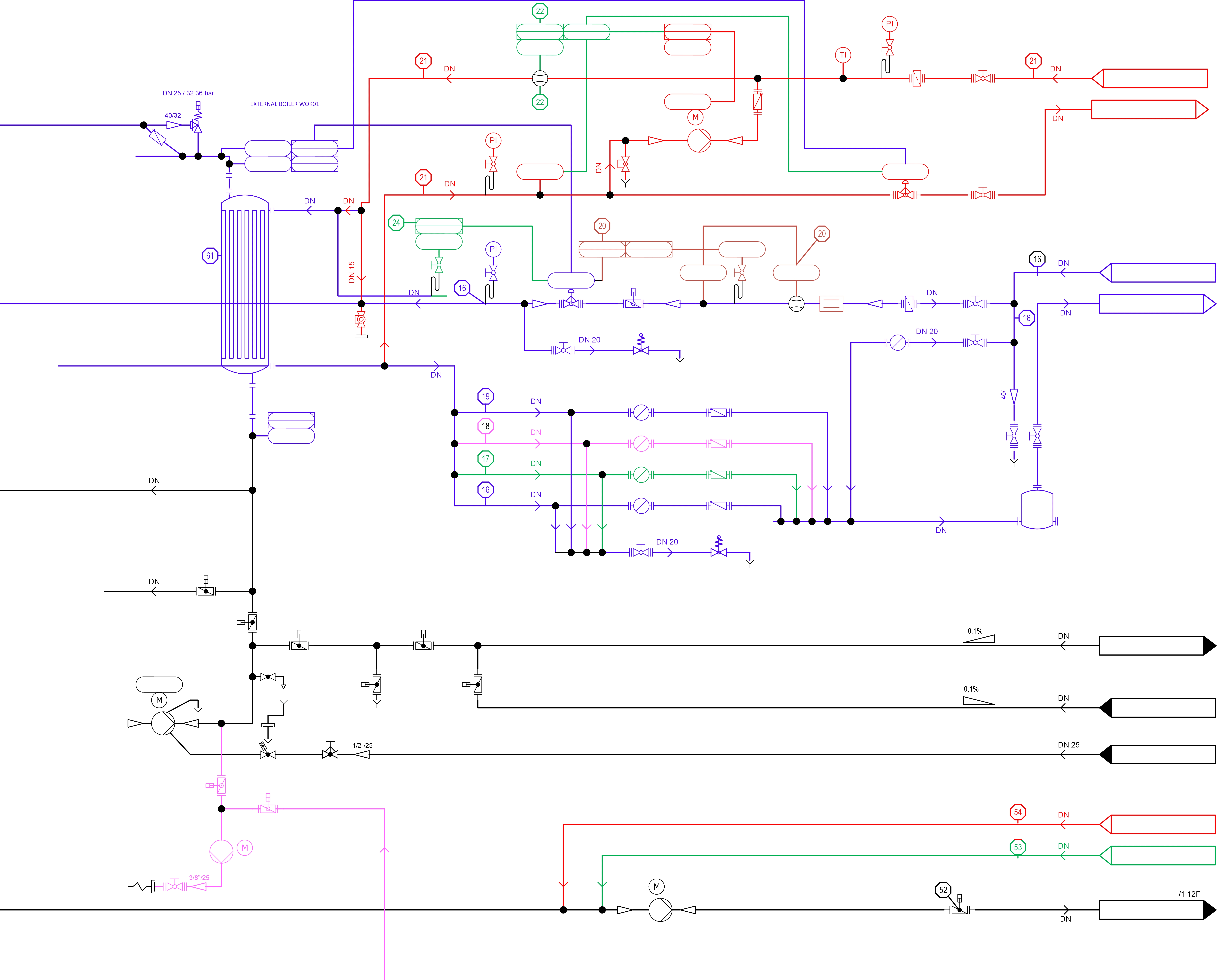90% for nothing?
Quite a few mechanical and plant engineers write thousands of tenders per year with only 10% of them, or often even less, ever being accepted. This involves the enormous tying up of resources without an ensured return. Engineering Base enables the tendering stage to be radically shortened. Sales professionals can also create the desired plant for each customer without an in-depth knowledge of engineering and can easily derive an outline costing from the diagram. The designers can then devote themselves to their core task, which is to plan real plants that generate turnover.
To support tender preparation, some designers create their own tools, but they are not linked in turn to ERP and "real" engineering. Others configure their tender in turn in the P&ID tool. However, this sometimes requires time-consuming 3-D designs in order to obtain complete bills of material (BOMs). This also necessitates an unreasonably high level of effort under enormous time pressure, which is not exactly conducive to quality.
Avoiding system disruptions
 © AUCOTEC AG
© AUCOTEC AG Furthermore, there are usually a whole series of system disruptions and manual transmissions during the tendering stage. They interrupt the workflow between reviewing, engineering, costing and ERP, and require additional time while posing a risk of errors - especially if a customer requests subsequent changes. In addition, updates of individual tools in the chain continually lead to time-consuming interface adjustments or difficulties in data transmission.
What exactly did the customer want?
The requirements of potential customers pose another challenge. The tenderer often receives them in a variety of formats. They may consist of hundreds of pages either in Excel, as a PDF, JPG or Word files. They are all distributed among various departments for review. But where do they end up? How and where should these requirements be archived to ensure that the information is not lost or does not have to be laboriously sought at a later stage from various departments and locations?
Central data storage
 © AUCOTEC AG
© AUCOTEC AG It is best to store data in a centralized and project-related manner. The database-driven platform Engineering Base (EB) from AUCOTEC is ideally suited for this purpose. In EB, each document is a separate object which can be stored in whatever format with the corresponding date in the database relevant to the project. Although the system cannot dispense with the need to review the requirements, it can provide highly efficient support for most of the other tasks involved in preparing tenders. EB with its central data storage, as a single source of truth, which all participants access, also significantly simplifies the entire process.
Setting milestones
After reviewing the requirements, EB's Workflow Assistant enables the setting of milestones for the entire tendering process and the attachment of the relevant status (for example, in progress, released, and so on). The WA subsequently displays the percentage completion of individual tasks continuously and thus creates a unique overview of each stage of the tender preparation. It is completely freely configurable, which means that it can be customized to each requirement and each workflow.
Simply switching off
 © AUCOTEC AG
© AUCOTEC AG After setting tasks, the customer's requirements must be filled with content. Templates (typicals) from EB's database are used for this purpose. The resulting process flow diagram (PFD) of a "150% plant" includes both the absolutely necessary components of a plant as well as all possible options and variants that supplement the "must-haves" in the diagram as an additional layer according to the type of layer model and are indicated in a different colour. These options can be deselected just by clicking. They are still present in the database (and can be activated at any time if a customer reconsiders the earlier decision), but are no longer visible in the diagram after their exclusion and are also marked in the background as "not relevant for costing".
The functional approach in Engineering Base enables a detailed tender-relevant BOM to be assigned to different graphic representations. A tank, for example, is only very simply represented in this preliminary P&ID, but is stored with background information such as the complete corresponding BOM or its connection logic. This avoids unnecessary drawing and thus saves a lot of time and resources.
Final costing
The typicals with their relevant components and devices also contain the average price information including the associated assembly costs. They can be easily specified if, for example, the customer stipulates a specific manufacturer from the outset.
From all selected and thus costing-relevant components, EB calculates, within a matter of seconds, a realistic offer consisting of material and production costs, while also considering sales and administrative overheads. The more detailed the individual assemblies or devices are defined – a situation which is always feasible due to the possibility of linking EB with the ERP system – the more accurate the tender is.
The layer principle enables the customer's changes to be very easily implemented, both graphically as well as in terms of costing. Additional components can be easily activated or deactivated leading to the appearance of an updated spreadsheet after only a few clicks.
Basis for contract engineering
If the contract is then actually awarded, the designers can proceed seamlessly to contract engineering. The central data model can be easily completed progressively with increasingly detailed information. Thus the entries and specifications from the tendering stage are not lost, but simply continue to be used as the basis for the contract-related engineering. Furthermore, the BOMs of previously created assemblies can be transferred directly to the ERP from the engineering system without any manual labour due to EB's openness for integration.
Relief
This approach relieves each ERP system immensely. This does not result in the loss of vast amounts of data, which are unusable in over 90% of tenders because the machine or plant is never built. For tender engineering with EB, the platform immediately transfers the BOMs without any transmission errors directly to the ERP only if the contract is awarded. The real project is created and grows instantly.




